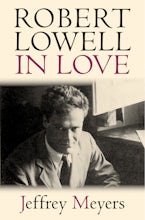- Home
- Studies in Print Culture and the History of the Book
- Creating a World on Paper

Creating a World on Paper
Harry Fenn's Career in Art
by Sue Rainey
Published by: University of Massachusetts Press
Series: Studies in Print Culture and the History of the Book
408 Pages, 8.00 x 10.00 x 1.20 in, 58 color, 150 b&w
Other Retailers:
Harry Fenn was one of the most skilled and successful illustrators in the United States in the latter half of the nineteenth century, a time when illustrated periodicals and books were the primary means of sharing visual images. Fenn's work fostered pride in America's scenic landscapes and urban centers, informed a curious public about foreign lands, and promoted appreciation of printed pictures as artworks for a growing middle class.
Arriving in New York from London in 1857 as a young wood engraver, Fenn soon forged a career in illustration. His tiny black-and-white wood engravings for Whittier's Snow-Bound (1868) surprised critics with their power, and his bold, innovative compositions for Picturesque America (1872–74) were enormously popular and expanded the field for illustrators and publishers. In the 1880s and '90s, his illustrations appeared in many of the finest magazines and newspapers, depicting the places and events that interested the public—from post–Civil War national reconciliation to the World's Columbian Exposition in 1893 to the beginnings of imperialism in the Spanish-American War.
This handsomely designed volume documents Fenn's prolific career from the 1860s until his death in 1911. Sue Rainey also recounts his adventurous sketching trips in the western United States, Europe, and the Middle East, which enhanced his reputation for depicting far-flung places at a time when the nation was taking a more prominent role on the world stage.
Arriving in New York from London in 1857 as a young wood engraver, Fenn soon forged a career in illustration. His tiny black-and-white wood engravings for Whittier's Snow-Bound (1868) surprised critics with their power, and his bold, innovative compositions for Picturesque America (1872–74) were enormously popular and expanded the field for illustrators and publishers. In the 1880s and '90s, his illustrations appeared in many of the finest magazines and newspapers, depicting the places and events that interested the public—from post–Civil War national reconciliation to the World's Columbian Exposition in 1893 to the beginnings of imperialism in the Spanish-American War.
This handsomely designed volume documents Fenn's prolific career from the 1860s until his death in 1911. Sue Rainey also recounts his adventurous sketching trips in the western United States, Europe, and the Middle East, which enhanced his reputation for depicting far-flung places at a time when the nation was taking a more prominent role on the world stage.
Sue Rainey is the author of Creating "Picturesque America" (1994), which won the Charles C. Eldredge Prize (Smithsonian) and the Ewell L. Newman Award. Rainey has served as editor of Imprint: Journal of the American Historical Print Collector's Society. She lives in Charlottesville, Virginia.
"This is an exhaustively researched, fully documented, clearly organized, and well written study of the life and work of the artist/illustrator Harry Fenn, embedded into the history of the times in which he lived."—James F. O'Gorman, author of Accomplished in All Departments of Art: Hammatt Billings of Boston, 1818–1874
"Clearly written and packed with new information. The author has mined a great variety of primary sources to excellent advantage."—Katherine Manthorne, author of Tropical Renaissance: North American Artists Exploring Latin America, 1839–1879
"Sue Rainey, whose magnificent study of Picturesque America brought that indispensable pictorial achievement into the context of nineteenth-century American art, has now produced a comprehensive study of one of that publication's chief illustrators, Harry Fenn. Fenn was an artist whose name has appeared constantly to all of us involved with American nature and landscape, as well as the history of American watercolor painting, covering a good many decades of cultural enterprise. Fenn's significance is fully realized in this study. But more, Rainey has produced irrefutable proof that the knowledge of our leading illustrators--and illustration itself--is not a separate (and lesser) division within the arts of America, but needs, as here achieved, further integration into the full understanding of visual culture in the nineteenth century."—William H. Gerdts, Professor Emeritus of Art History, Graduate School of the City University of New York
"An impressively detailed and illustrated biography. . . . Informed and informative, this seminal work is truly extraordinary."—Midwest Book Review
"Alongside formal visual analysis, Rainey weaves Fenn's compelling personal story into the rich fabric of prevailing artistic movements, technological shifts, cultural tastes, social attitudes, and political developments of the nineteenth and early twentieth centuries. . . . Combining significant scholarship with high-quality reproductions and handsome design, this book would be a welcome addition to any library focusing on American art, visual culture studies , or the history of the book."—ARLIS/NA Reviews
"Every academic library should own a copy of this book. . . . Well done, Ms. Rainey."—Critical Margins
"Creating a World on Paper is a wonderful book, a work of scholarship that is also eminently readable and entertaining. It both brings Harry Fenn vividly to life as a human being, and provides a window on the changing world in which he lived. . . . It is a major contribution to the literature of printing history. It should be required reading for all those members of the American Historical Print Collectors Society with a serious interestin this era."—Imprint











